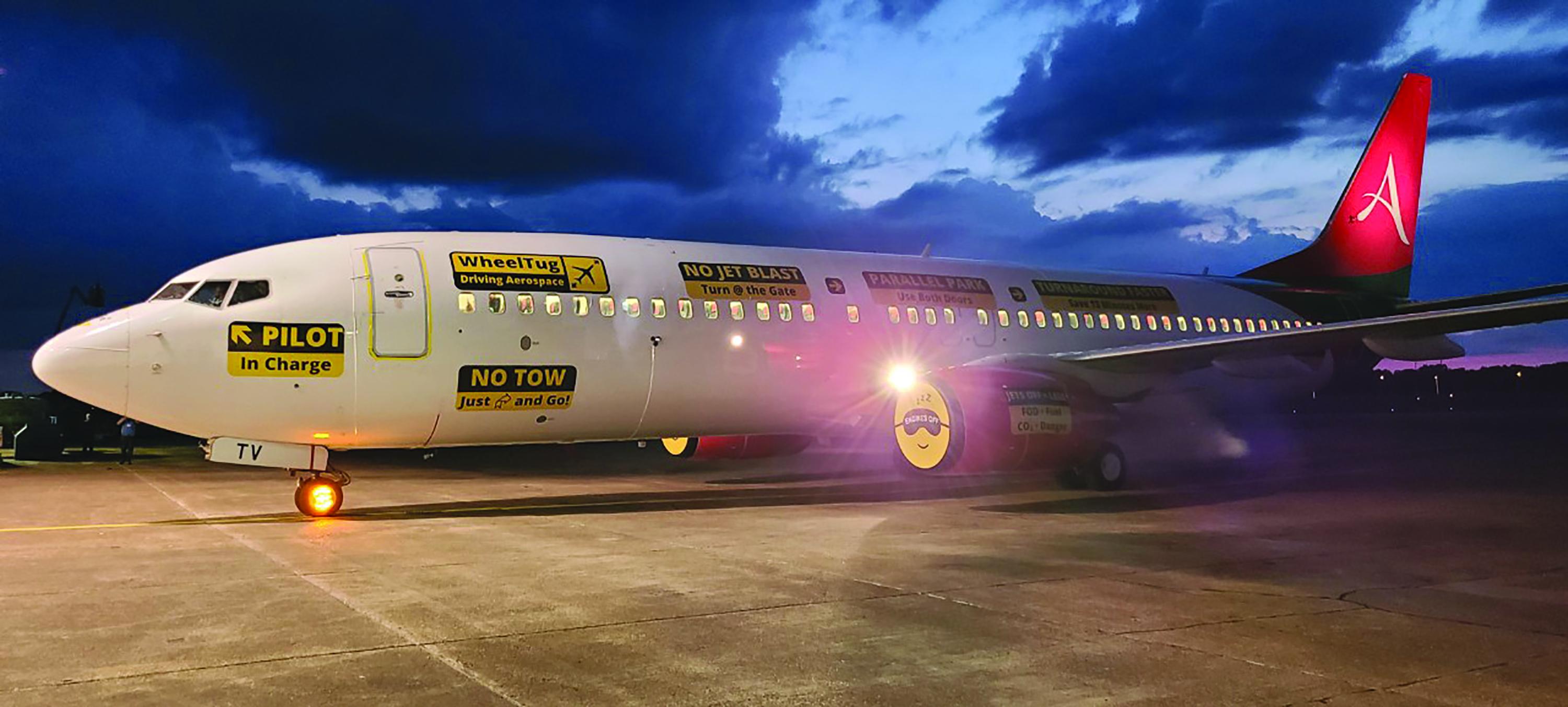
Ask the Editors: The Aviation Week Network invites our readers to submit questions to our editors and analysts. We’ll answer them, and if we can’t we’ll reach out to our wide network of experts for advice.
Why Do Airlines Continue to Resist Electric Taxi Motors?
Aviation Week Executive Editor for Technology Graham Warwick responds:
As a way to reduce airliner fuel consumption and emissions, electric taxiing looked technically promising when it was first demonstrated in 2005. But economic reality can be different. One project is progressing toward certification, but others have been canceled or put back on the shelf for future use.
Without doubt, taxiing on the power of electric wheel motors works. It has been tested often enough to prove that. The problem is the ratio of benefit to cost in commercial operations. Of the two programs that continue, one is aimed at retrofitting older aircraft, for which the benefit would be higher; the other is targeting integration of the system into the design of future aircraft, for which the cost could be lower.
The premise is simple: Using wheel motors and not engine thrust to taxi reduces fuel burn, emissions and noise. Electric taxiing was first demonstrated in 2005 by Boeing Phantom Works and Chorus Motors, using an electric motor attached to the nosewheel of a Boeing 767 and driven by the auxiliary power unit (APU). The company WheelTug was formed to commercialize the technology.
Other demonstrations followed. In 2011, German aerospace center DLR, Airbus and Lufthansa Technik modified an A320 to test an electric-driven nosewheel powered by a zero-emissions fuel cell. That same year, Lufthansa teamed up with L-3 Communications and Crane Aerospace to demonstrate electric taxiing using motors in the main wheels of an Airbus A320. But the GreenTaxi project was later quietly dropped.
At the Paris Air Show in 2013, Honeywell and Safran demonstrated the jointly developed Electric Green Taxiing System (EGTS), catching the world’s eye by pirouetting an A320 around the Le Bourget concrete on mainwheel drive and APU power only. Air France and Airbus signed on to support development.
But in 2016, in the midst of low oil prices, Honeywell terminated its EGTS joint venture with Safran. The French systems manufacturer continued on its own with development but in 2019 was forced to shelve plans to equip A320s when Airbus lost interest, publicly citing insufficient system performance and maturity.
Safran says it continues to work on an electric taxiing program “to be directly incorporated into the next generation of short- and medium-haul [single-aisle] aircraft.” The company says the system will reduce fuel costs 4%, cut emissions and noise as well as increase on-time takeoffs.
That leaves WheelTug as the only company still working on an electric taxiing system that could be fitted to today’s airliners to reduce fuel consumption and emissions. It has been a long haul. At one time, Delta Air Lines planned to begin using the system on its Boeing 737NGs in 2009.
Today, WheelTug is expecting supplemental type certification on the 737NG by the end of 2021 and entry into service early in 2022. The A320 is planned to follow. The company staged a public “test drive” at Memphis International Airport on Sept. 15 with a preproduction system fitted to a 737-800.
With letters of intent from more than 25 carriers to fit more than 2,000 aircraft, WheelTug CEO Isaiah Cox says airlines are increasingly supportive of electric taxiing. But because it benefits older, shorter-range aircraft more than new longer-range ones, there is no natural incentive for the OEMs to support e-taxi. This is because the system adds weight. On longer flights, the fuel burned carrying that extra weight offsets the fuel saved taxiing electrically. And orders for single-aisles have shifted dramatically toward longer-range, more fuel-efficient aircraft such as the Airbus A321LR, reducing the perceived benefit. That may change when e-taxi can be designed into the next generation of single-aisles from the outset as part of concerted efforts to minimize carbon emissions. For now, WheelTug’s slow progress toward an aftermarket modification holds the only hope for fielding the technology in the near term.






Comments
Only when weather events delay either the takeoff or the taxi to the gate after landing would an electric taxi system be useful. Now, with reduced schedules, these conditions will probably be encountered less frequently.